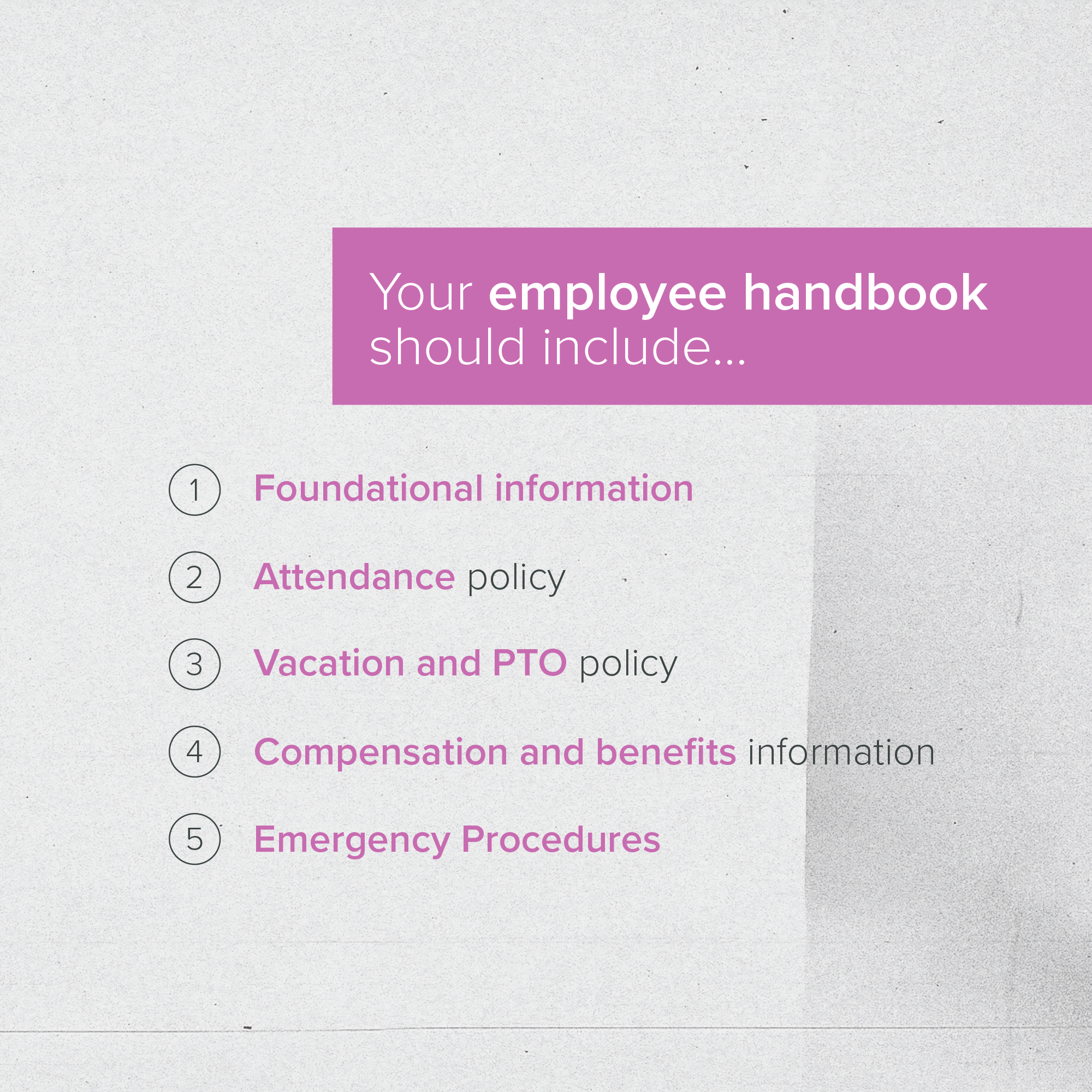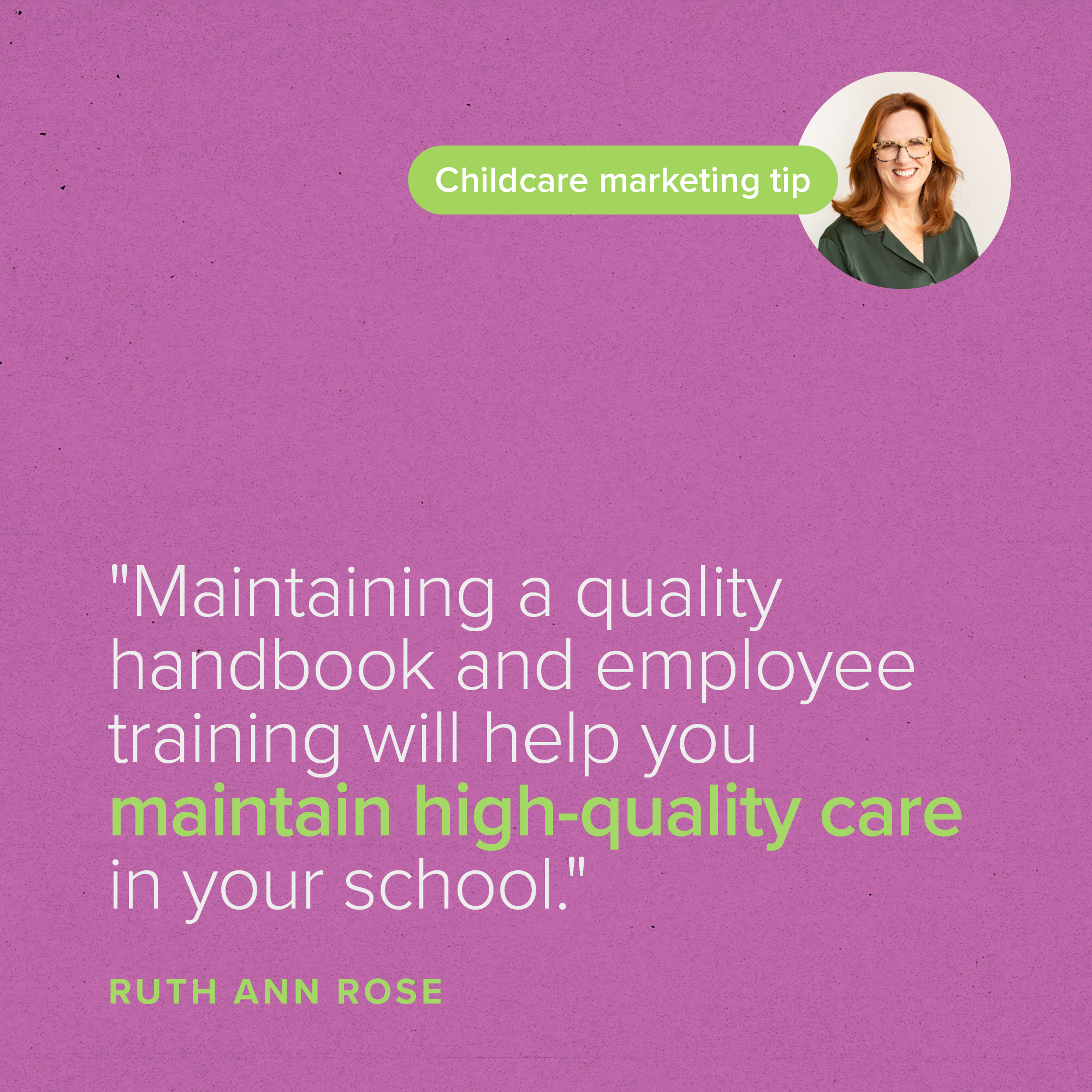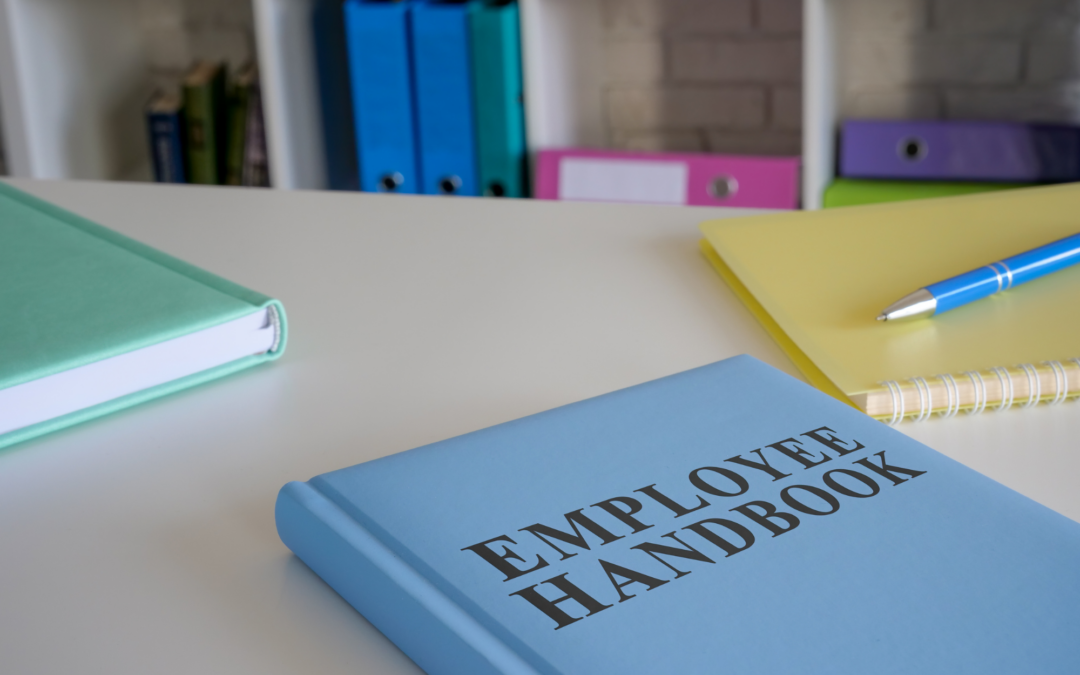Childcare is the only industry with two “showtimes” daily — pickup and drop-off. These showtimes create unique opportunities… and unique challenges.
A daycare employee handbook that communicates your policies and procedures is essential in training your staff to do their primary job: caring for children. But more than that, your daycare employee handbook explains how your employees’ behavior impacts your branding and marketing, which affects families’ experiences during your two daily showtimes.
Communicate your expectations and standards, and update your handbook regularly.
What Your Daycare Employee Handbook Should Include
Every daycare employee handbook should include the following basic information:
Foundational Information
Include and regularly update information regarding your school’s core values, mission, and philosophy.
Attendance
Expected arrival and departure times are essential to include in your daycare employee handbook and on your website.
Vacation and PTO
Keep information regarding vacation time and PTO up-to-date and accurate.
Compensation and Benefits
Over time, compensation and benefits packages may change. Be sure the information in your handbook is current and correct.
Emergency Procedures
As the saying goes, prepare for the worst and hope for the best. Put emergency policies and procedures in place for employees and ensure your employees are familiar with them.
Include these policies and procedures in your daycare employee handbook, and place a separate emergency SOP (standard operating procedure) handbook in an easily accessible place, like the front desk. Make sure each staff member remains familiar with these procedures as you update them.

Making Updates
Now that we’ve covered the basic contents of a daycare employee handbook, let’s look at some other elements and sections that deserve regular updating.
The Handbook Format
Because you work with kids, you know people learn in different ways. Some people prefer to read, some listen, and some watch. Your staff has various learning styles, too. Why not meet them where they are?
By changing the format of your daycare employee handbook to video micro-sessions and elearning programs, you make it more accessible and increase the chances your staff will internalize and retain the information.
Try turning the handbook into a video series for visual learners. Then, make it interactive by pairing it with quizzes after each section to ensure they absorb the information. Beth Cannon has exceptional examples of this on her website.
Giving your staff these advantages positions your business for success. Employees who have opportunities to learn are 30–50% more likely to stay with their employer — and you know how valuable talented teachers are. It’s in your best interest to keep them.
Interactions With Parents
Give your staff clear guidelines for interacting with parents at all times, including during “showtimes” and tours. They should greet parents by name with a smile and make sure parents feel welcomed.
Cell Phone Policy
If you don’t have a cell phone policy, write one. If you wrote yours before smartphones entered the mainstream, update it.
Some older daycare employee handbooks have sections on camera usage but nothing about cell phones — because cell phones didn’t exist or didn’t have cameras back then. If either is the case for your daycare employee handbook, it needs an update.
Remove your staff’s temptation to be on their phones rather than paying attention to kids.
Dress Code
Fashion trends change, and you must update your employee handbook to reflect anything you haven’t accounted for.
For example, I know one owner whose staff used to wear yoga pants to work despite his objections. Finally, he wore yoga pants to work one day and shocked his staff. That made his point. Some fashion trends aren’t appropriate for work in a childcare center.
Additionally, spell out acceptable and unacceptable usage of your staff’s uniforms, including in specific environments and in social media images. For example, teachers should change out of their staff shirts between leaving work and going to happy hour with friends.
Social Media and Image Usage
Teachers and families can form bonds as children grow, but connecting over social media is a step too far — and one you should address in your employee handbook.
A blanket policy against staff and families being “friends” on social media prevents issues and misunderstandings and maintains a professional barrier. However, this policy only works if it’s clear and everyone adheres to it.
Specify your social media policies regarding images teachers can post of your school on their personal social media accounts.

Best Practices and Must-Dos
An exceptional daycare employee handbook only works if everyone receives it, reads it, and retains the information it contains. Tip the balance in your favor by offering the handbook in different formats and requiring quizzes to ensure your staff understands the content.
The last step is to have everyone legally sign off on the handbook or complete a series of online modules, which ensures every staff member receives the same training. You can hold everyone to the same high standard.
Maintaining a quality handbook and employee training will help you maintain high-quality care in your school. That translates into an excellent reputation and a great brand — which is exactly what you need for generating new leads and filling classrooms.
Subscribe
Sign up with your email address to receive news and updates.

